2024 NBA Mock Draft
To everyone who read and supported my work this year: thank you! Let's close this 2024 draft cycle out in style: an in-depth mock draft. As always, it included a detailed explanation per pick. Enjoy!
With the draft being less than a week away, it’s time for a mock draft!
The selections are based on what I think will happen, not what I would do. Therefore, I left my personal rankings out of the equation. With the draft switching to a two-way event, more trades are likely to happen. Therefore, it’s important to mention that the draft order as of June, 19th is used in this thesis.
Enjoy this look at the full NBA Draft in a little over 5,000 words!
The First Round — June 26 (8 ET)
Atlanta Hawks — Donovan Clingan (Sophomore, C)
For Atlanta, adding a rim deterrent who will feist off of Trae Young’s playmaking and live-dribble passing is their biggest must-have. Adding another wing would not move the needle for them. Their lack of rim protection gave them one of the worst defensive ratings in the league for consecutive seasons.
Clingan is the best screening big man in this class. That will open up Young’s game even more. One of Clingan’s value-risers is his ability to generate open looks and scoring angles via his screening and timely rolls. With his great mobility, the path to having a Gobert-esque defensive reputation in the next few years is among the possibilities. But for that to happen, he has to go to the right context, and the Hawks are in the most need to add that type of big-man partner for their star point guard.
Washington Wizards — Alexandre Sarr (2005, C)
With Sarr refusing to work out for the Hawks, it’s clear that the Wizards are willing to take him in to fit their needs at center. Looking at the phase of their rebuild, it’s clear that Washington is willing to take their time with him. While drafting a utility player in the top five seems too rich at first hand, Sarr’s potential to emerge as a future defensive star will put another valuable piece alongside Coulibaly as two prime building blocks for the future.
Betting on long-term potential early in a rebuilding phase should always be the way to go, and I like what the Wizards are potentially doing here with the second overall pick. His early role will mostly consist of playing as a screener and play-finisher inside the arc while getting the reps to create his offense on the perimeter and work on improving his jumper. His future value as a floor-spacer is what can eventually lead to him flirting with an All-Star selection later on in his career.
Houston Rockets — Zaccharie Risacher (2005, SF)
The Rockets are in an interesting situation. With Şengün ascending towards an All-Star selection soon and Green becoming a different player under Coach Udoka, Houston continued to add talent in Thompson, Whitmore, Eason and Smith Jr. who will all play in important role in their future plans.
While adding veteran leadership in VanVleet, Brooks and Adams, Houston is on par to get themselves into the playoffs next season. Therefore, continuing to add roster versatility is a must. In the league’s transition to positionless basketball, adding more size, versatility and ball handlers will give them more talent to fill out the rotation with.
Risacher’s combination of size, shooting touch, footwork and mobility make him one of the more unique prospects of the last few years. His shooting prowess is an instant roster-improver where he can grow into a role right out of the gates. The lack of offensive creativity is what keeps him away of serving as a number one option in the future. And on a Rockets team that’s built around Şengün and Green, filling their shooting needs while offering long-term potential is a win for Houston’s continuing development of their young group.
San Antonio Spurs — Rob Dillingham (Freshman, PG)
While he’s unable to work out for teams due to the ankle injury, his ball-handling, scoring prowess, and offensive creativity make him the best offensive player in this class. In a traditional pick-and-roll heavy Spurs type of basketball, Dillingham will fit in well. Improving its offensive rating is going to be crucial for San Antonio’s return to the playoffs. Considering their wing-heavy roster construction, they can afford to put the ball in the hands of Dillingham, where the Spurs have multiple options to compensate for the defensive rating they will give up with him on the floor.
The “he’ll get targeted” prejudices are not fair to me, as Dillingham plays with effort and toughness and shows decent to good screen navigation. His slim frame and lack of size and length however lead to him struggling as a pick-and-roll defender. In an NBA strength and conditioning program, a part of these deficiencies are fixable, making that an area of development for Dillingham in the next few years. In terms of future value, I project him to be the first All-Star in this draft class.
Detroit Pistons — Reed Sheppard (Freshman, SG)
The Pistons desperately need shooting depth. With a new General Manager in Trajan Langdon, Sheppard will be an instant success as they are getting one of the top shooters in this class. With skepticism about which role he will fulfill in the NBA, the Pistons must pair him with a plus-sized leading ball handler in the backcourt. With a great feel for the game combined with a mature defensive skillset, Sheppard has a pathway to continue impacting his team’s success on both ends.
Playing the right way as a complementary piece at the start of his career could lead to Sheppard growing in his role in earning more on-ball reps. Especially if he continues to show a reliable jumper on top of his defensive impact. Detroit is committed to Cade Cunningham. Therefore adding another defensive menace alongside Thompson while also partially fixing their three-point shooting issues is a good way to continue to build their roster towards a playoff appearance in the upcoming seasons.
Charlotte Hornets — Stephon Castle (Freshman, SG)
Charlotte is in a good position to continue their rebuild. With a future star in Brandon Miller, the question marks around LaMelo Ball’s health are stalling their overall development as a team. With reliable pieces in the frontcourt in Williams and Bridges, who is expected to resign with the Hornets, adding an all-around connecting guard to the equation becomes the way to go for the Hornets’ front office.
With his great physical tools, defensive versatility, and team-first-minded game, Castle projects to grow into a reliable starter with his secondary playmaking, interior-scoring prowess, and developing three-point jumper. He’s one of the most complete players in this class, making him a lock to be a top-ten pick.
Portland Trail Blazers — Matas Buzelis (2004, PF)
In Buzelis, the Blazers find themselves a plus-sized ball handler with great positional size. His improving three-point shot needs to be contextualized due to him adjusting from the high school line to the NBA three-point line. In terms of his development as a shooter, we saw him ascending in the latter stages of the season, making it feasible that improvement will continue in the NBA.
For his role, Buzelis should be seen as a blueprint, rather than having a clear job on day one. His great athleticism led to him showing good things as a weak-side defender in the G League. On an underwhelming Ignite team, the value of the production on both ends should be less important, with his clear flashes of being a starter in the NBA being the value that puts him in the top ten in this class. For Portland the fit in ball-heavier pieces in Henderson and Sharpe, make Buzelis a good fit for them.
San Antonio Spurs (via Toronto) — Tidjane Salaün (2005, PF)
Despite recent injuries, Salaün should have a lot of fans within the San Antonio front office. The Spurs can afford to be patient, which is needed to take the most out of the 18-year-old’s potential.
While having a great frame, positional size, and length, Salaün can become a multipositional defender in the future. His quick feet and shot-making skills make him one of the more complete wing prospects of the last two draft cycles. However, there’s a big question mark behind his feel for the game in terms of his off-ball defense and overall defensive awareness. This makes it a ‘survivor of the fittest’ type of prospect, with the Spurs traditionally showing a lot of patience in guys they trust to eventually land them plus-value.
When considering instant improvement at four, the Spurs can afford to bet on long-term potential with their second top-ten pick.
Memphis Grizzlies — Kel’el Ware (Sophomore, C)
The third center in the top ten. The Grizzlies were not lucky in the draft lottery and as expected, they miss out on the big prize in both Sarr and Clingan. While trading Adams to the Rockets, the Grizzlies certainly want to surround their young core with a complementary center that can fit their rebounding need, while showing the ability to screen and pop to the perimeter.
In Ware, they get a versatile pick-and-roll option who can roll to the rim for soft-touch finishes or serve as a floor-stretching big. Issues surrounding his motor are partially compensated after a good year in a big-man-heavy Big Ten conference. As a true seven-footer, adding more size and length to their frontcourt is another value proposition the Memphis front office will focus on.
Utah Jazz — Cody Williams (Freshman, SG)
Utah will focus on adding positional size alongside their potential-rich backcourt in George and Sexton. In Williams, they are buying physical teams most NBA teams are looking for. At 6’8”, Williams’ length and defensive versatility make him a must-have to build around and complement the above-mentioned offensive duo.
With great length at a wingspan over seven feet, Williams starred in a scalable role where despite the lack of quick-twitch athleticism, he got to his spots in the interior with ease. On top of that, he has shown flashes of pick-and-roll scoring and playmaking. For the NBA, having a scalable option that can play as a one, two, or three makes it easier to build around others while ensuring defensive consistency.
Chicago Bulls — Ron Holland (2005, SF)
The Bulls are buying physical tools with Holland. He is the defacto number one guy on my board, but with an underwhelming shooting showcase during his pro day, NBA scouts will likely hold his struggles from the perimeter against him.
Chicago can afford to invest time in Holland, while slowly opening up minutes and usage for him to thrive. This will allow him to experiment with the role he had in high school as an interior face-up scorer who leverages his explosiveness and speed to be productive.
Holland has to work on developing into a specific role whereafter he can unleash his true potential. With his handles and decision-making being the two main areas of development.
Oklahoma City Thunder (via Rockets) — Dalton Knecht (Senior, SF)
The Thunder look to continue to stay in win mode by going for the best player available here. With Knecht, they get an instant offensive improvement on their wings, as their need for offensive creativity and athleticism off the bench is what will bring them further in the playoffs.
With reliable rotational pieces such as Wallace and Wiggins, the Thunder can afford to put the ball in the hands of Knecht to provide them with offensive leadership and three-level scoring for their second unit. That will take away pressure from Gilgeous-Alexander and thus benefit the Thunder’s ability to maintain consistent offense while banking on the creative defensive schemes that brought them so much success this past season.
Sacramento Kings — Tyler Smith (2004, PF)
The Kings have one of the league’s best offenses under Coach Brown’s system. Adding onto their scoring potential while also betting on defensive potential brings them to Tyler Smith.
The 19-year-old didn’t impress NBA scouts with his shooting during the Combine. However, the large sample size of threes and rim finishes made in the G League will serve as a good feasibility test to project a similar lower-usage role in the NBA.
With great positional size at a wingspan over seven feet, Smith brings in intriguing athletic tools that can help him to serve as a two-level scorer, where he’s asked to finish plays at the rim and to shoot open threes from the perimeter at a large volume, taking away scoring pressure from back-to-back All-NBA Third Team member Domantas Sabonis, who can focus on his role in the interior.
Portland Trail Blazers (via Warriors) — Devin Carter (Junior, SG)
With Henderson as the leading guard for the future, the Trail Blazers will focus on adding toughness, intangibles, and leadership to their young roster. In Carter, they have a fantastic secondary playmaker who can provide them with instant offense on day one. On top of that, his rebounding and guard defense make him a wanted commodity among all decision-makers in the lottery.
As a volume-shooter, Carter has shown that he can take a reduced role while the lack of size is being compensated with an almost plus-seven wingspan. As the Big East Player of the Year, Carter is ready to take his talents to the West Coast and lead a dynamic Trail Blazers backcourt to success.
Miami Heat — Isaiah Collier (Freshman, PG)
Despite measuring out badly at the Combine, it’s easy to see the long-term potential in Collier’s profile. He’s a shifty ball handler who thrives on generating paint touches with enough offensive creativity to be a threat as an interior scorer. Careless turnovers combined with underwhelming shooting at USC needs to be put into context as he was surrounded by below-average shooters, increasing the pressure on Collier to lead the offense.
As a natural result, turnovers and below-average numbers were the outcome. In terms of his NBA value, Collier needs to improve his feel for the game as a defender to fully bank on his physical tools. As a paint touch generator and playmaker, there’s a role for Collier early on in his career on a Miami Heat team that looks to replace an aging Lowry in the next few years.
Philadelphia 76ers — Jared McCain (Freshman, SG)
The Sixers look to add a high-end shooter to complement Maxey’s interior scoring. As a secondary creator and passer, there’s room to develop for McCain who took over the role as Duke’s leader in the latter stages of the season.
His feel for the game and basketball IQ are two difference-makers among his peers, whereas McCain’s high floor due to a reliable three-point shot off the catch makes him a safe pick with some underrated long-term potential. His going to Philadelphia is one of my favorite fits in this year’s class.
Los Angeles Lakers — DaRon Holmes II (Junior, PF)
There are rumors that the Nuggets made Holmes II a promise at the 28th pick. However, he’ll be long gone by then, as the Lakers add another reliable frontcourt piece in Holmes II. After a great sophomore campaign, Holmes II decided to go back to school to improve two areas: his playmaking and three-point jumper.
As a consensus second-team All-American, Holmes II has shown a total package in a pick-and-roll-heavy Dayton game. His transition to the NBA will be swift as he has multiple areas to hang his hat on. Serving in a two-big line-up alongside an all-time defender in Anthony Davis will kickstart Holmes II’s career as one of next year’s impact rookies.
Orlando Magic — Baylor Scheierman (Senior, SF)
While building around multiple ball-handlers, the Magic will need to add up talent among their wings and forward slot. Drafting the ultimate connector in Scheierman, who I called a “two-way role star”. The athleticism, defensive footwork, and awareness make him a fantastic fit at the three-slot in a plus-sized line-up where Orlando can utilize Scheierman’s rebounding and multi-positional character of his game. While being a very good pick-and-roll defender, Scheierman has enough areas to force Coach Mosley to give him a big role in their rotation.
Toronto Raptors (via Pacers) — Pacôme Dadiet (2005, SF)
Under Masai’s reign, the Raptors tend to focus on plus-sized positionless pieces who can handle the ball, keep the ball moving, and are capable of making decisions. Shooting depth is key to contributing early on and slowly growing into a more ball-dominant role. That’s the trajectory for Dadiet, who is one of the better prospects in this class in terms of long-term potential.
At 6’9” in shoes, Dadiet’s biggest downfall is his off-ball defense. With slow reactionary speed and underwhelming decision-making, his feel for the game is what will keep him in or out of the league in a few years. Landing at a good developmental team will be crucial for his future. And with the Raptors, his potential as a ball-handler, pick-and-roll creator, and interior scorer adds on top of his already good shooting. While playing a rotational role in the German league and the Eurocup, Dadiet can come over and play minutes right away despite being one of the younger prospects in this class.
Cleveland Cavaliers — Nikola Topić (2005, PG)
A hidden injury together with underwhelming measurements makes it a tough case for Topić to solidify his early-season top-five trajectory. He’s one of the best players in this class in terms of live-dribble passing, overall playmaking, and angle creation when he’s looking to score. With good handles, Topić effortlessly gets to the rim relying on his craft.
The risk in his profile is his not having faced many NBA-caliber athletes, making his defense an area of attention for NBA decision-makers. On top of that, favorable coverage by bigger media outlets has hidden the fact that the owner of Mega Basket is his agent, Miško Ražnatović. As one of the most powerful agents in Europe, Topić ascending to where he is now is mostly due to his accomplishments on the floor, but partially due to his agency preparing his draft stock before returning him to KK Crvena Zvezda when it was at an all-time high.
This leads to me lowering his draft value, as the injury concerns and underwhelming measurements still warrant a clear top-20 talent the Cavaliers will gladly take.
New Orleans Pelicans (via Bucks) — Zach Edey (Senior, C)
With Valančiūnas hitting undrafted free agency in the summer of 2025, we might see the Pelicans go for a big man to complement their stars in Williamson, Ingram, and McCollum. In Zach Edey, they will instantly fix their rebounding issues while adding the most dominant college big man of the last decade. Edey has proven doubters, including me, wrong many times with his tremendous conditioning, leading to him playing good minutes in the NBA — at least, that’s the feasible outcome considering his heavy minutes in college.
Adjusting to the NBA pace might take some time, but the Pelicans add another rim-dominant factor alongside Williamson who will crash the glass, finish plays, and punish mismatches with his bully-ball type of game. Fundamentals are the most important thing to me, and Edey’s touch at the rim screams NBA success.
Phoenix Suns — Pelle Larsson (Senior, PG)
In Larsson, the Suns find themselves with a veteran floor general who can serve as an inverted pick-and-roll threat while complementing the star-studded Phoenix offense. His task will be to structure and serve as a floor general at times while mostly asked to hit open threes on the go. At a rate of 42.6% on three attempted threes per game, the Suns get their depth at point guard while looking for further additions later in the summer.
Milwaukee Bucks (via Pelicans) — Terrence Shannon Jr. (Senior, SG)
In Shannon Jr., the Bucks get one of the strongest wing scorers in the class. The fifth-year senior can contribute alongside Lillard as another creative scorer who can scale down his role in serving as a spot-up shooter. Adding offensive firepower to their starting line-up is key considering the big dropoff on that end of the floor with both Lillard and Antetokounmpo having shown to be durable, but failing to make ends meet in terms of the offense in the most crucial phase of their season.
Off-court issues have cost Shannon Jr. a place in the Green Room alongside a damaged reputation while losing millions of dollars of future money. He can work on reviving his good reputation for which his teammates at Illinois respected him both as a person and their de facto leader. Mental toughness is what kept Shannon Jr. dialed in and focused with an entire nation turning its back on him.
New York Knicks (via Mavericks) — Ryan Dunn (Sophomore, SF)
Dunn is one of the best defensive prospects I have scouted in my basketball career so far. With the Knicks needing to expand their rotation, Dunn is a typical Thibodeau type of player with his great fundamentals, defensive awareness, and total impact on that end of the floor. He’s a surefire lottery talent, but the offense has been rough, despite a bad Virginia context. Working on his jumper is crucial for his development, as that will decide if he can stay on in the NBA for a second or even third contract.
New York Knicks — Isaiah Crawford (Senior, SF)
A freak athlete by nature, Crawford fits the mold of the modern wing with his great length and positional size. With more NBA teams preferring wing-sized ball handlers who measure out well, Crawford is already having NBA teams considering drafting him this summer. His combination of knowing his physical tools and how to use them to his advantage, combined with his ability to play fast and knock down open shots makes it possible for him to have a role in a team’s rotation early in his career.
The two most crucial areas of development are Crawford’s tendency to ball-watch on defense at times while overdribbling on offense. In terms of Crawford reading the game and executing his reads consistently, it’s feasible that he’ll improve in the future when getting more reps — likely in the G League.
Washington Wizards (via Clippers) — Trentyn Flowers (2005, PG)
In Flowers, the Wizards will add a dynamic scorer who serves as an automatic paint touch. He has been ‘my guy’ this entire draft cycle with his ability to separate himself from his peers with his touch at the rim, smooth handles, and offensive creativity. While adjusting from high school to the NBL, Flowers has gotten a bigger role throughout the season. His three-point shot is a work in progress, but Washington is a good destination for him as he will serve as a ball handler on their wing-heavy roster alongside Coulibaly and Avdija. He’ll likely start the year in their second unit while growing into a long-term starter in the next few years.
A value pick by Washington here in the first round.
Minnesota Timberwolves — Jaylon Tyson (Junior, SG)
The Wolves will address their need for scoring depth in the second unit. In Tyson, they are getting an advanced pick-and-roll playmaker and scorer who has shown a scalable game from serving as a floor-spacer and shooter at Texas Tech, while also being capable of running the offense and leading his time during his days at California.
Tyson’s size, handles, defensive toughness, and feel for the game will do wonders for their offensive rating, keeping production on the floor even with their second unit. His strength and size advantage will eventually translate into him serving as a multipositional defender in the future.
Denver Nuggets — Jaylen Wells (Junior, SF)
Wells is one of the best shooters in this class. He transferred up after being an All-American at the Division II level last year. As the season progressed, he improved in utilizing his shooting gravity by improving his passing game, leading to his assist numbers increasing in the last ten games.
As a team defender, he gives NBA decision-makers the most value. After he turned himself into one of the Cougars’ most important players, Wells got more comfortable in taking his role as a leader on the court. His awareness as an off-ball defender combined with his decision-making make it feasible for him to be able to become an above-average team defender in the future.
The Nuggets can afford to slowly bring him to their rotation while filling their shooting needs on the wings while banking on Wells’ team defense to complement their stars.
Utah Jazz (via Thunder) — Yves Missi (Freshman, C)
The Jazz will strengthen their center rotation with Missi. A freak athlete by nature who can handle the physicality of the NBA while coming in to start his career off with a clear role. His rebounding, rim-running, and toughness will bring much-needed rim protection in the minutes Kessler sits on the bench.
As a screener, Missi is one of the better prospects in this class, which will open up his game in terms of expanding his role. As a play-finisher, Missi needs to work on expanding his range to eventually grow into a role where he can stretch the floor while keeping his defensive-anchoring potential in place. The Jazz can swing for the fences and bet on long-term potential in their youthful roster that still needs depth at the five.
Boston Celtics — AJ Johnson (2004, PG)
The NBA champions will use their 30th pick to add a long-term point guard to their star-studded roster. Johnson made me regret not having watched him in-depth earlier in the draft cycle. In terms of his long-term potential. he has the talent to be a starter somewhere in his career. His physical tools and footwork combined make it impressive how mature his game is for a 19-year-old.
The small details on film however do. Johnson has great footwork, especially on defense. He has created habits of using that in combination with his physical advantages, such as his burst and quickness when he’s closing out or sliding his feet when he has the ball handler in front of him.
His jump shot needs work. That’s the swingskill that will determine if he can stay on a floor for a long time, or has to settle for a role where his defense and playmaking are the important additions.
To celebrate the NBA Draft, here’s 20% off! With over 80 in-depth scouting reports, this newsletter will remain your number one source for all you need to know about the less-coveted prospects in the NBA Draft.
The Second Round — June 27 (4 ET)
Toronto Raptors (via Pistons) — Carlton Carrington (Freshman, PG)
Utah Jazz (via Wizards) — Enrique Freeman (Senior, PF)
Milwaukee Bucks (via Trail Blazers) — PJ Hall (Senior, PF)
Portland Trail Blazers (via Hornets) — Jonathan Mogbo (Senior, C)
San Antonio Spurs — Ulrich Chomche (2005, C)
Indiana Pacers (via Raptors) — Ja’Kobe Walter (Freshman, SG)
Minnesota Timberwolves (via Grizzlies) — Trey Alexander (Junior, PG)
New York Knicks (via Jazz) — Kyle Filipowski (Senior, C)
Memphis Grizzlies (via Nets) — Cam Christie (Sophomore, SG)
Portland Trail Blazers (via Hawks) — Oso Ighodaro (Senior, PF)
Philadelphia 76ers (via Bulls) — Ajay Mitchell (Junior, PG)
Charlotte Hornets (via Rockets) — Justin Edwards (Freshman, SF)
Miami Heat — Jaedon LeDee (Senior, PF)
Houston Rockets (via Warriors) — Adem Bona (Sophomore, C)
Sacramento Kings — Tyler Kolek (Junior, PG)
Los Angeles Clippers (via Pacers) — Judah Mintz (Sophomore, PG)
Orlando Magic — Melvin Ajinça (2004, SF)
San Antonio Spurs (via Lakers) — Malevy Leons (Senior, PF)
Indiana Pacers (via Cavaliers) — Tristan da Silva (Senior, PF)
Indiana Pacers (via Pelicans) — Juan Núñez (2004, PG)
Washington Wizards (via Suns) — Nikola Durišić (2004, SG)
Golden State Warriors (via Bucks) — Harrison Ingram (Junior, SF)
Detroit Pistons (via Knicks) — Kevin McCullar Jr. (Senior, SG)
Boston Celtics (via Mavericks) — Quinten Post (Senior, C)
Los Angeles Lakers (via Clippers) — Reece Beekman (Senior, PG)
Denver Nuggets (via Timberwolves) — Jaylin Williams (Senior, PF)
Memphis Grizzlies (via Thunder) — Jamal Shead (Senior, PG)
Dallas Mavericks (via Celtics) — Bobi Klintman (2003, SF)
Thank you!
With over 80 in-depth scouting reports containing over 2,500 words, Ersin’s NBA Draft Newsletter has become the ‘one-stop-shop’ for NBA Draft content for many. While growing the newsletter from zero to over 400 subscribers, the goal is to continue growing it by valuing quality over quantity.
The draft should be accessible to everyone. With bigger media outlets focusing on the ‘top guys’, I want to create an even playing field by focusing on the less-coveted prospects. Every year has success stories outside of the lottery, so why not be among the selective people who saw it coming from miles away?
My goal for the 2025 NBA Draft is to have over 100 in-depth scouting reports. Trust me, I get a thrill from every single subscription. Eventually, the goal is to make the newsletter cost-neutral, thus forcing me to change to the scouting reports being available to paying subscribers. As a thank you for your support, here’s 20% off on me.
And if you want to give Ersin’s NBA Draft Newsletter an additional boost, please consider providing an amount of your choosing as a member of Team Ersin Demir.





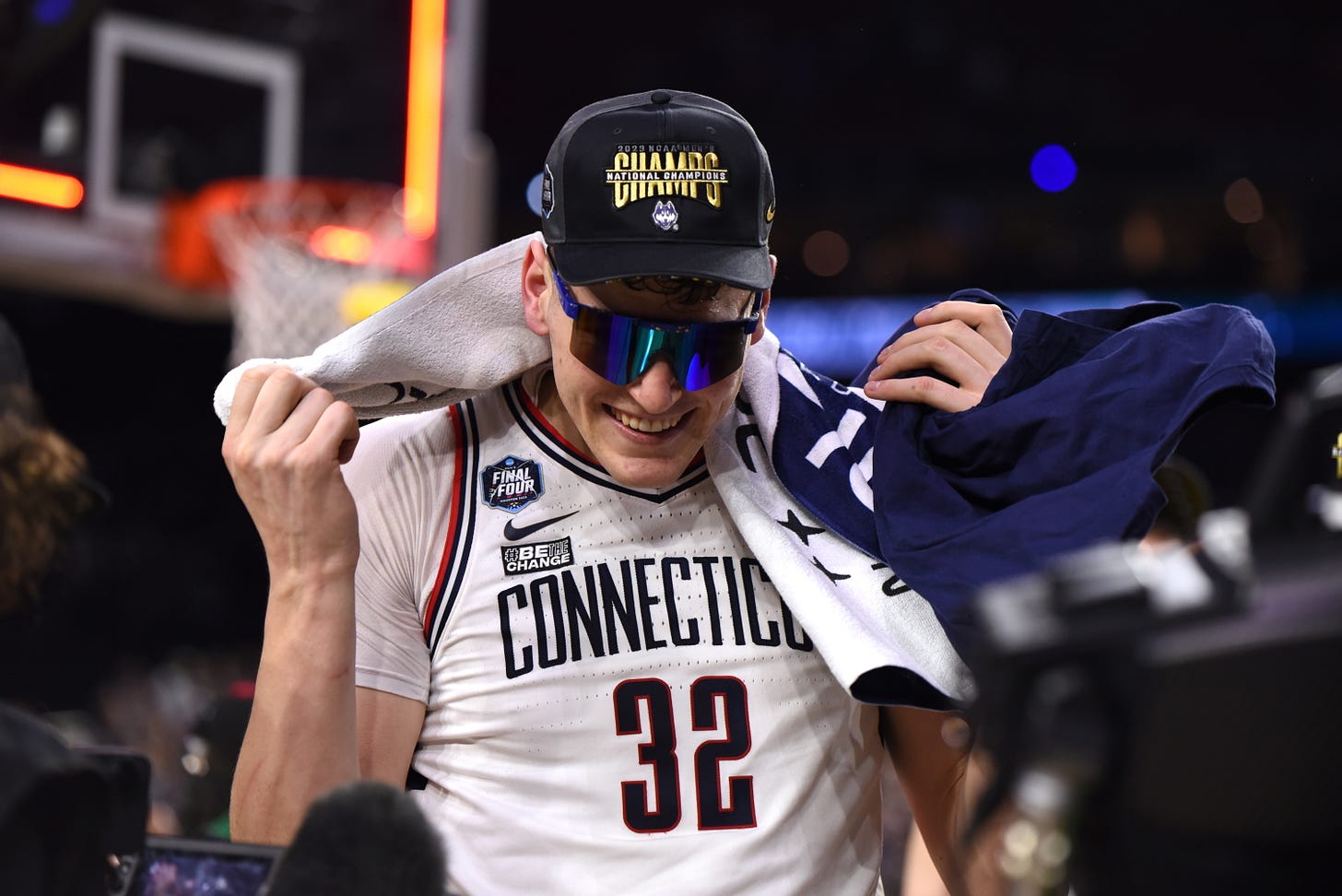
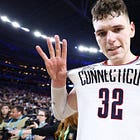
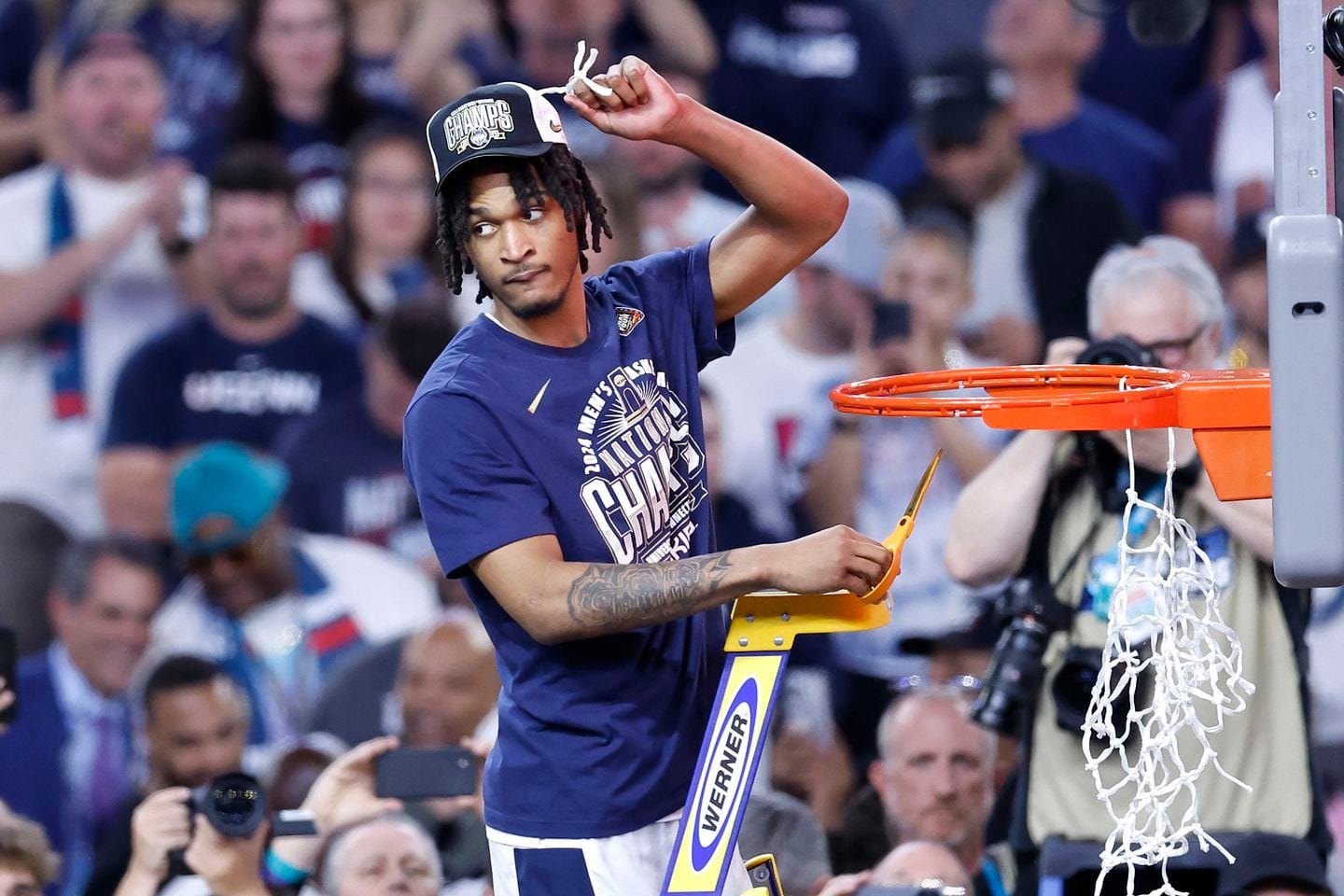







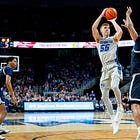
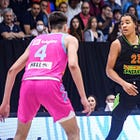
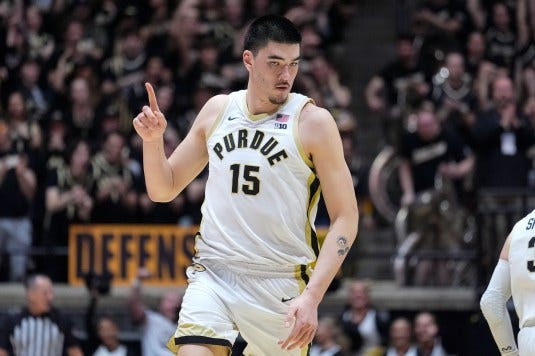
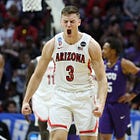
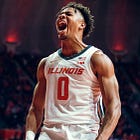

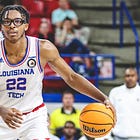
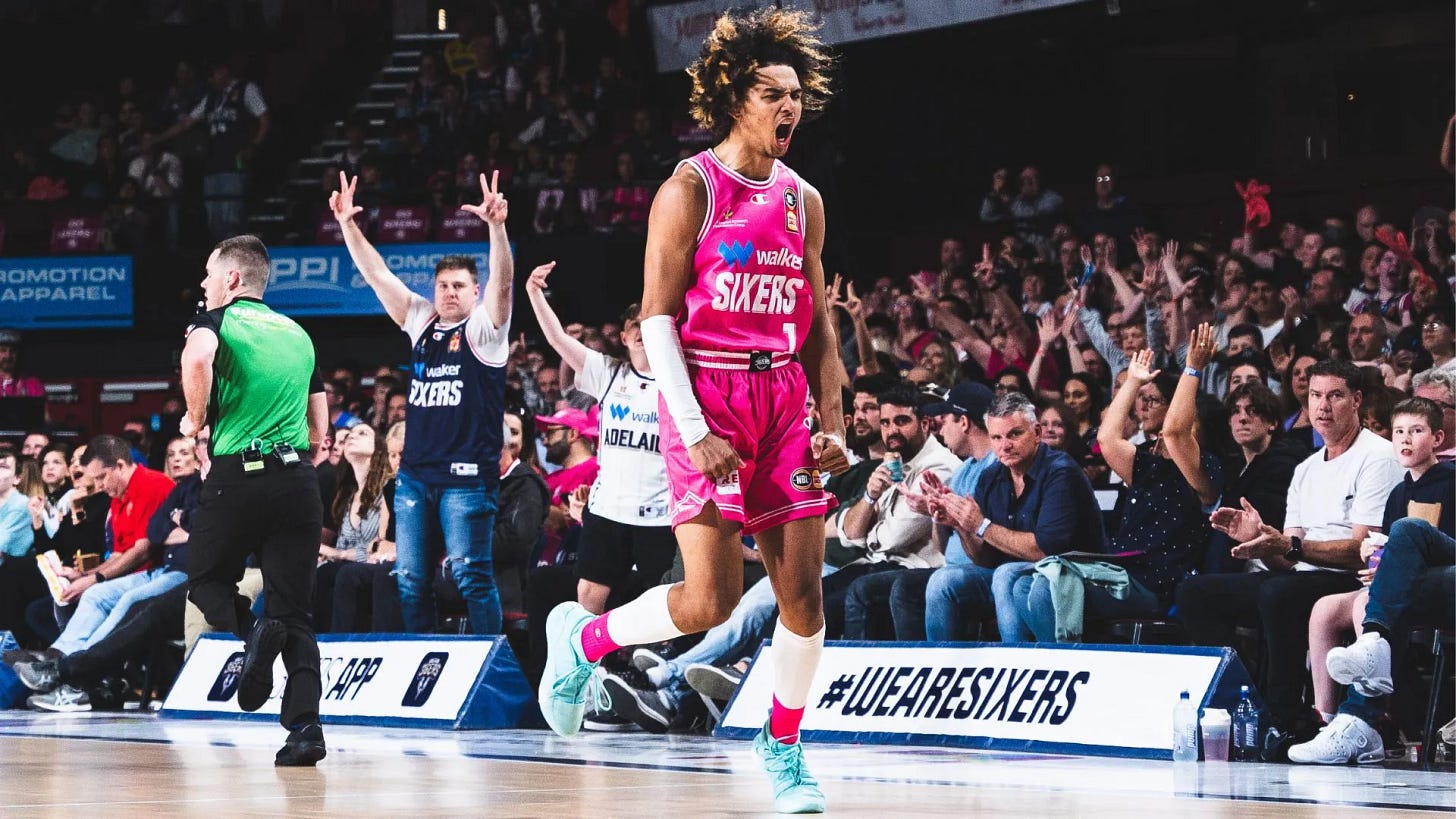
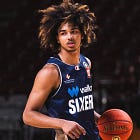




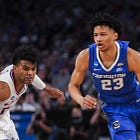

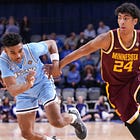
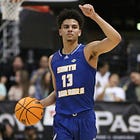
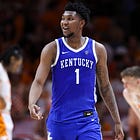
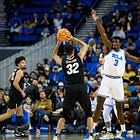


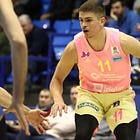
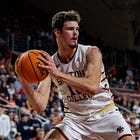
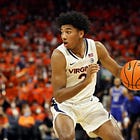
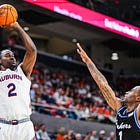
Great work as always man. Really appreciate the effort you put into your work. Keep on with your work man it's really good stuff
Hardest working dude in the game